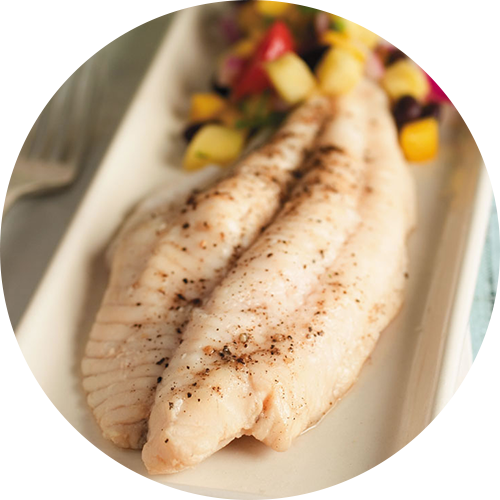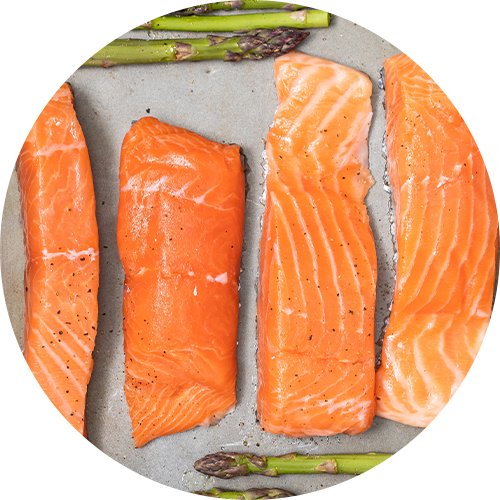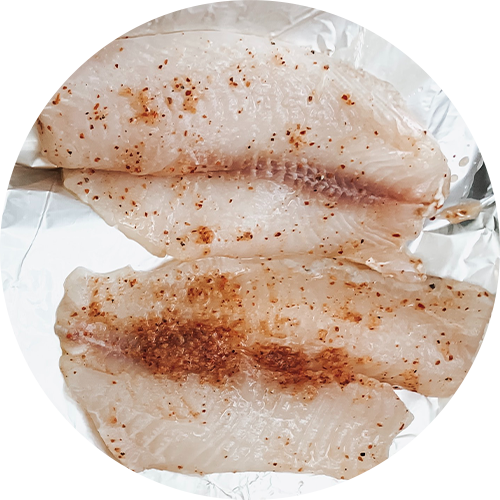Choosing seafood at the grocery store can be overwhelming – there are many options that vary in price, flavor and quality. The taste of fish can make or break a meal, especially for pickier eaters who are averse to “fishy” flavors. Below we break down the flavor profiles of a few popular seafood counter items, so you can feel confident choosing fish that you and your family will love to prepare and eat.
 Catfish
Catfish
U.S. Farm-Raised catfish has a uniquely sweet, mild flavor profile and firm flesh that has less flake compared to some other whitefish. Heartland’s U.S. farm-raised catfish are fed a high-protein, grain-based floating feed that gives them their signature mild and sweet flavor. This feed discourages the fish from searching for food sources elsewhere in the pond. Plus, our catfish feed is manufactured from crop-derived ingredients and contains no added hormones or antibiotics.
Farmed catfish is preferred to wild-caught catfish, as those caught in rivers and ponds will often have a musty, muddy, fishy taste because of what they eat (sometimes even mud!) in the water where they live.
Catfish can be cooked in a variety of ways and maintains its mild flavor in a multitude of recipes, from classic deep fried to baked, grilled and pan-seared versions.
 Salmon
Salmon
Farmed salmon tend to have a milder taste and more tender texture than wild-caught salmon, making it popular with consumers. This flavor comes from the feed the fish eat, which is usually made up of plants, grains and other ingredients. Farmed-raised salmon also have large sections of fat that create easily flaked and moist pieces once cooked.
Wild-caught salmon has a stronger, more pronounced fish flavor. The higher the fat content, as there is in wild salmon, the more powerful the taste. Wild salmon also eat other fish, plants and algae, as opposed to farm-raised feed. The stronger flavor can sometimes be off-putting to pickier eaters who don’t like “fishy” seafood, so it is a matter of preference for the consumer whether to purchase farm-raised or wild-caught salmon.
 Tilapia
Tilapia
Tilapia is lean and has a sweet, mild taste with a medium-firm, flaky texture. The flavor of tilapia is determined by the growing environment, including water quality and feed, but higher quality tilapia should taste mild and sweet. Sometimes, due to farming practices and diet (especially overseas), tilapia can take on a musty, dirty, earthy flavor.
Some consider tilapia to have nearly no flavor of its own, meaning it doesn’t have a “fishy” taste – making it popular on menus and dinner tables in the U.S. when paired with a highly flavorful sauce or side dish.
Incorporating seafood into your diet is a healthy and affordable choice. Talk with the manager at your local seafood counter to find out more about where their seafood comes from and what options might work best for you and your family when it comes to taste, price and sustainable practices. Learn more seafood shopping tips and check out our U.S. farm-raised catfish recipes.





